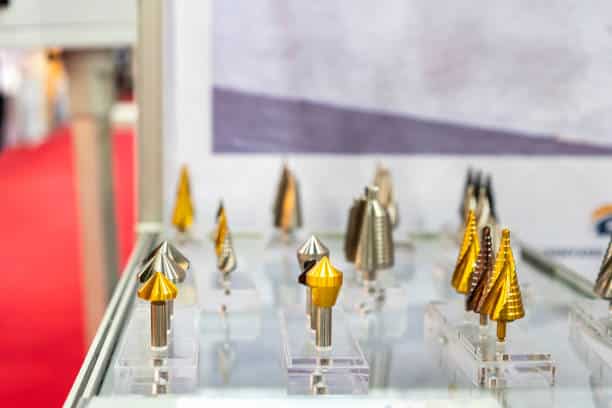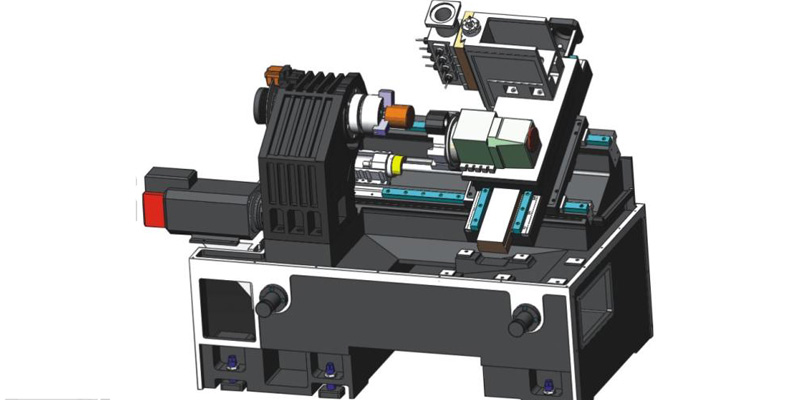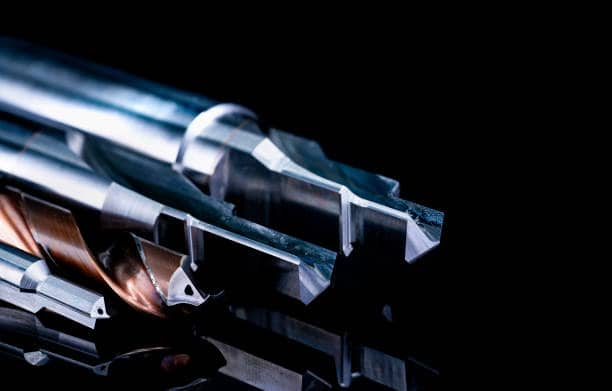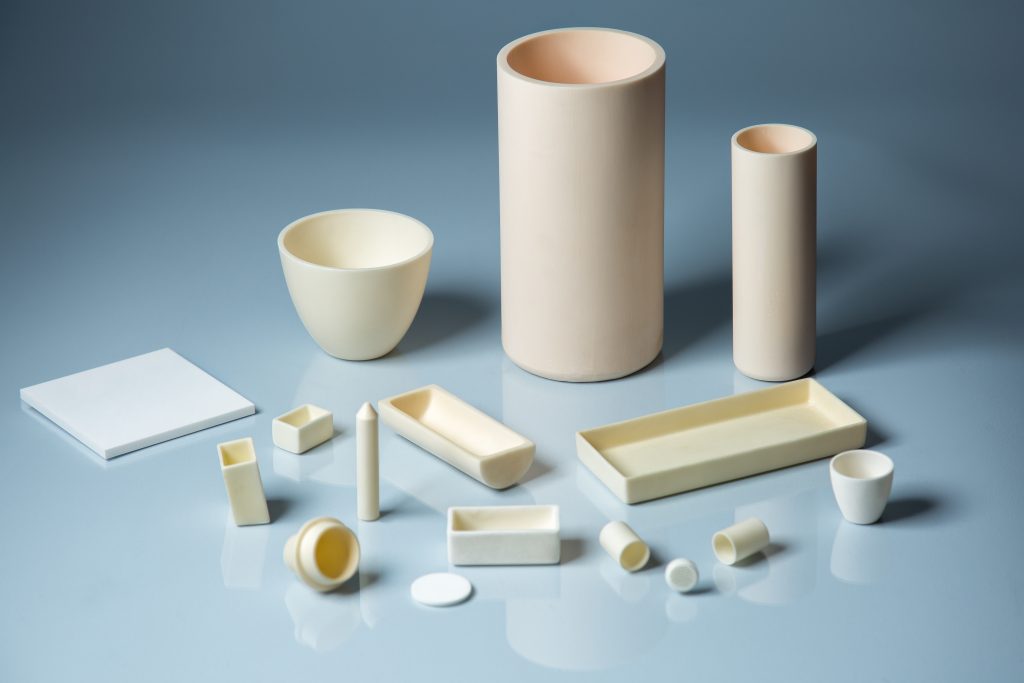Lathe cutting tools are instrumental in producing turned parts with a lathe machine and shaping materials to the desired form, making them a crucial aspect of CNC machining. To maximize the advantages of these tools, it is essential to understand the various types of lathe tools needed to perform different operations. This article provides a guide to the diverse range of lathe tools utilized in CNC turning and explains how to select the suitable one.
What Is A Lathe Cutting Tool?
Typically, the cutting tools used on lathes have a sharpened edge that is applied against a spinning workpiece to remove material to the desired level. These tools can be placed on a tool post for metal lathes or a tool rest for wood lathes, and can be adjusted by hand, hand wheels, or CNC technology.
Types of Cutting Tools
Common types of lathe cutting tools comes in four major classification categories: materials, operations, structure, and feed direction.
Based on Material
Lathe cutting tools can be classified into the following categories based on the material they are made of:
1. High-Speed Steel (HSS) Tools
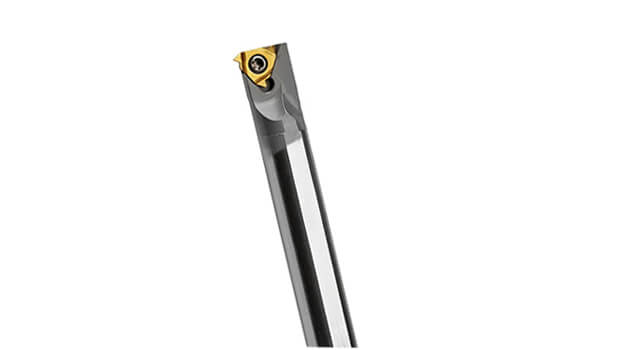
These tools are made of high-speed steel and can cut at high speeds without losing their hardness. They’re most commonly used to cut metals such as steel, aluminum, and cast iron, creating exceptional results for rough and semi-finish machining. HSS tools are easy to sharpen and have a long tool life.
2. Carbide Tools
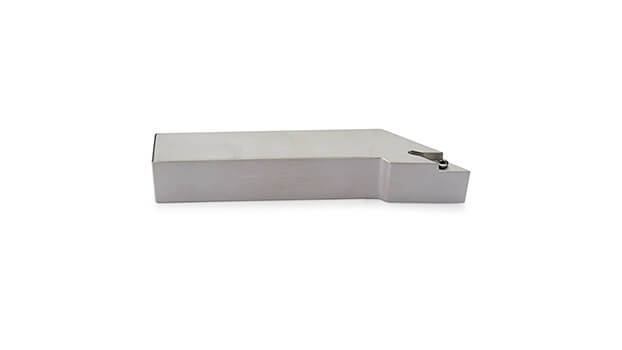
These lathe tools are very hard and wear-resistant. They are compatible with almost all materials with the ability to cut hard metals such as stainless steel and titanium, as well as abrasive materials such as wood or composites. Carbide tools can operate at high speeds and have a longer tool life than HSS tools.
3. Diamond tools
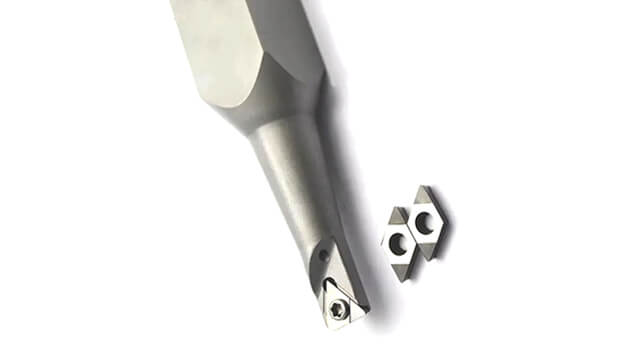
These tools are made of synthetic diamond materials and are used for cutting extremely hard materials, such as glass or ceramics. Diamond tools can operate at high speeds and have a long tool life. Nevertheless, they are so costly that limiting their use in industrial applications.
4. Special Coated Tools
As its name implies, they are generally HSS tools coated with special materials such as ceramic, cubic boron nitride (CBN), tungsten carbide, etc.
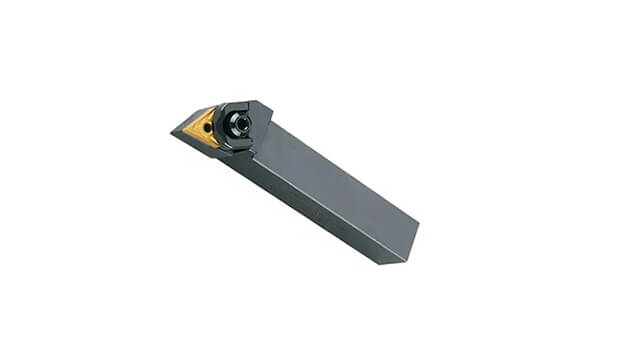
- Ceramic Tools: These tools are made of ceramic materials and are used for cutting hard metals, such as cast iron, and heat-resistant alloys. They are ideal for high-speed cutting and provide excellent surface finish. Ceramic tools are very hard and wear-resistant.
- Cubic Boron Nitride: This kind of tool is extremely hard and has many desirable qualities such as durability, resistance to abrasion, and being well-suited for rough machining and intermittent cutting tasks, particularly when working with cast iron materials.
Based on Operations
1. Turning Tool
There are two primary categories of turning cutting tools that are used for different purposes: rough turning tools and finish turning tools.
- Rough turning tools are used for quick removal of large portions of a workpiece. They are equipped with a cutting angle that can withstand the highest pressure and facilitate easy removal.
- Finish turning tools are utilized for removing smaller sections of a workpiece. As the name suggests, they are designed to create smooth and precise surfaces as the end product. The angle is appropriately crafted to achieve this outcome.
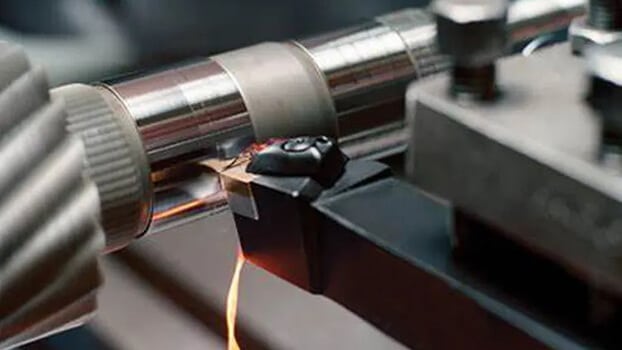
2. Chamfering Tool
The cutting edges of a straight turning tool set at a chamfer angle can also function as a chamfering tool. For tasks requiring frequent chamfer work, a specialized chamfering tool with side cutting edges set at the angle of the chamfer is utilized.
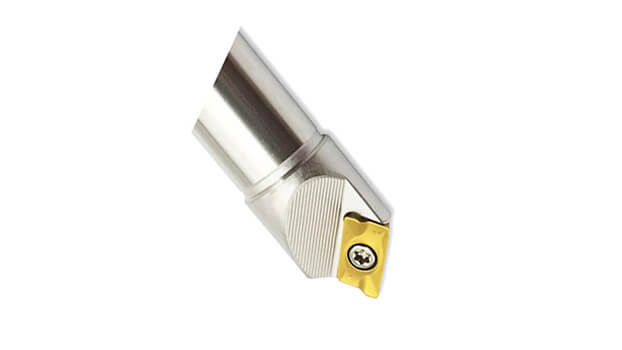
3. Shoulder Turning Tool
A square shoulder is shaped by a knife-edge turning tool or facing tool while a straight turning tool with zero nose radius and a side cutting edge angle is appropriate for a beveled shoulder. When dealing with a filleted shoulder, a straight turning tool is chosen, taking note of the corresponding nose radius of the work.
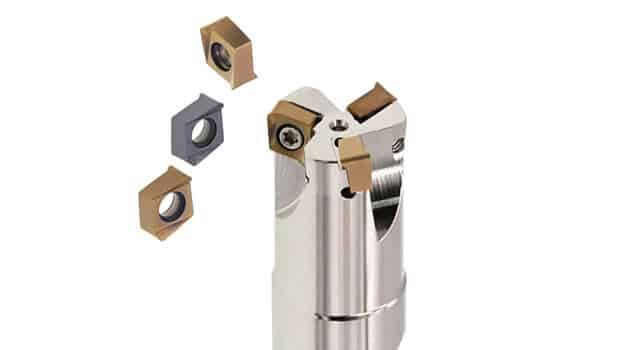
4. Thread Cutting Tool
Thread cutting tools are employed for cutting threads on a lathe workpiece, with two common types: internal and external thread cutting. In external thread cutting, the chuck holds or centers the workpiece, whereas internal thread cutting requires a chuck to grip the workpiece as the tool, taking off chips from the workpiece, moves across it in a linear pattern.
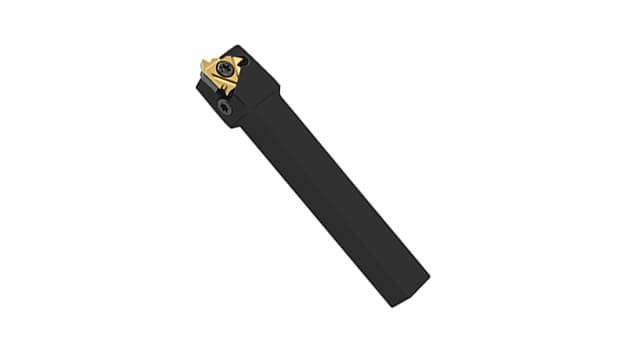
5. Facing Tool
A facing tool is a machine tool used to cut a surface that is perpendicular to the rotational axis of a workpiece. It is held by the tool holder on the lathe carriage during the process, allowing it to feed perpendicularly.
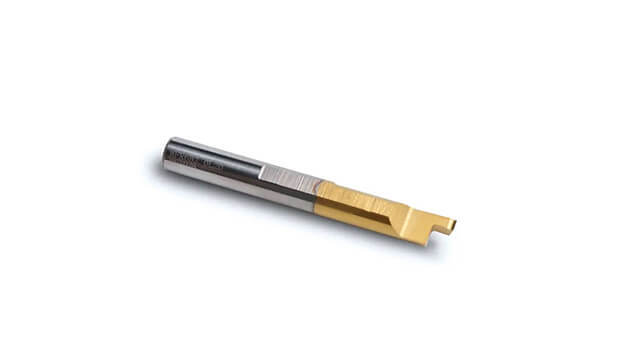
6. Grooving Tool
Grooves can be made on cylindrical surfaces using these tools, with the shape of the groove being determined by the shape of the lathe machine tool. Square and V-shaped cutting tools are common shapes.
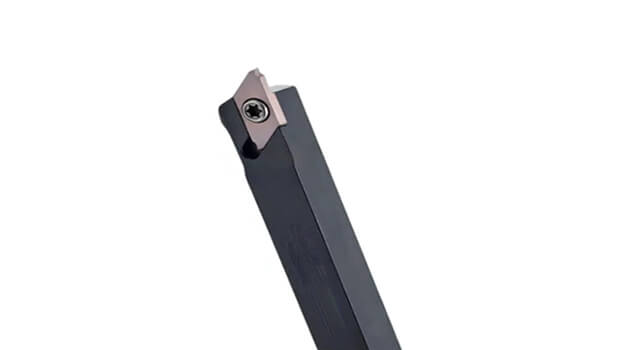
7. Forming Tool
A forming tool is a type of tool that combines a turning tool with a grooving tool. These tools allow for the creation of complex shapes in a single pass. While a turning tool can also be used for forming, a precisely designed forming tool can improve accuracy and reduce cycle time.
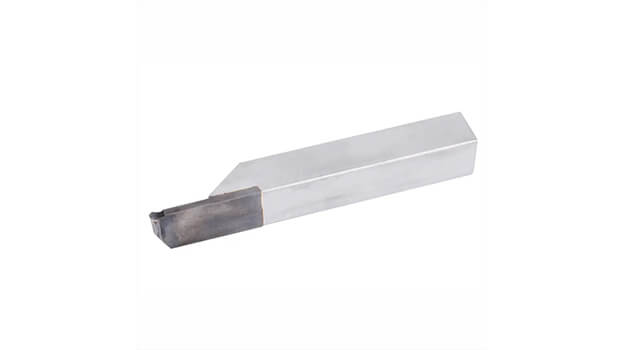
8. Boring Tool
Boring tool is used to enlarge holes by widening their diameter. These tools are inserted into pre-existing holes.
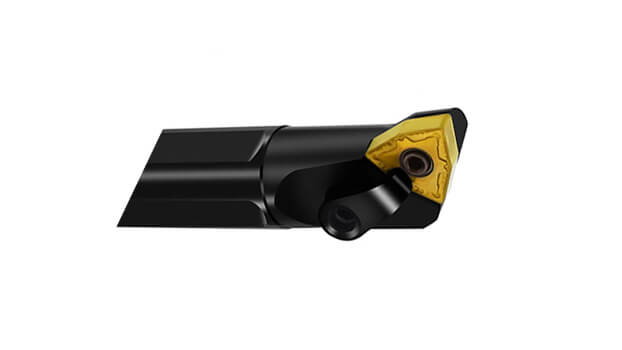
9. Counterboring Tool
An ordinary boring tool can perform a counterboring operation, leaving a shoulder after turning, while a counterbore with multiple cutting edges is commonly used.
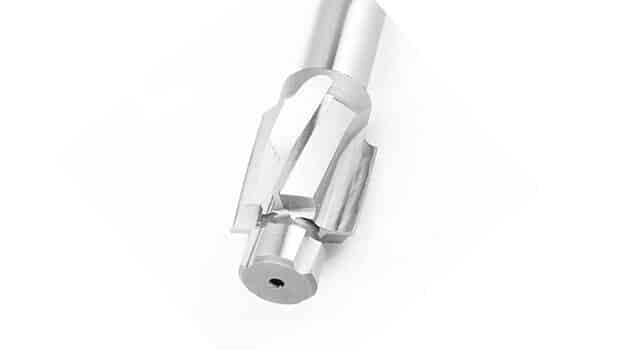
10. Undercutting Tool
The undercutting or grooving tool has a cutting edge similar to the required groove’s form, with clearance angles on all sides. Longitudinal feed is used for the recessing groove cutting edge, and the front clearance angle depends on the work bore.
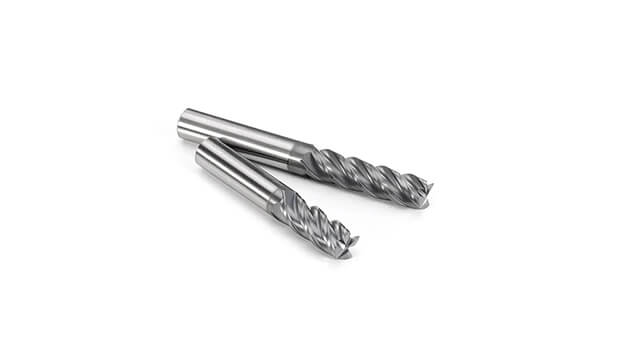
11. Parting Off Tool
Parting off tool is a narrow tool used to remove the minimum metal from a workpiece, usually forged to be used as bits for cemented carbide tipped tools.
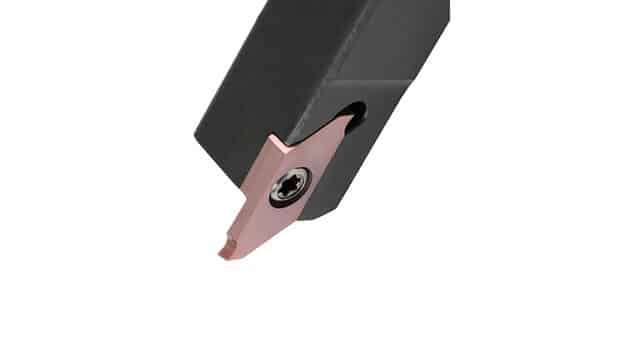
12. Knurling Tool
Knurling tools have two or more metal rollers with patterns embossed on them, often used to create indents to increase grip on the workpiece.
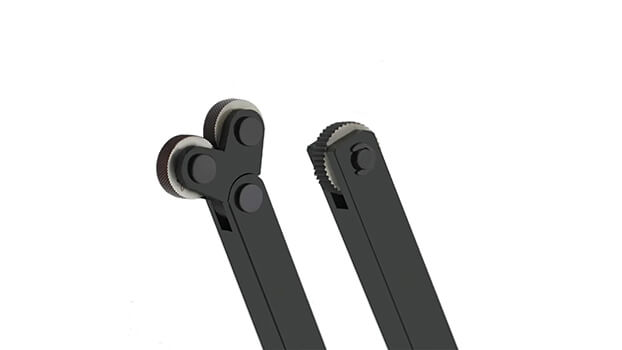
Based on Structure
1. Integral type
These tools are small in length and are created by shaping a single piece of metal with a sharp edge of a specific size and shape. This construction provides strength that allows the tool to withstand high cutting forces without breaking.
2. Welding type
The welding process connects the cutter head and rod, which are composed of different materials. A carbide insert is embedded on the rod, resulting in a compact, easily produced structure. This tool is suitable for various turning tools, with a particular advantage for small tools.
3. Clamp type
Made with different materials, the cutter head and rod contain a mechanical fixture to secure the inserted blade to the cutter bar. This tool is commonly used in a CNC lathe, and the cutter bar can be reused after the blade is replaced due to dullness.
Based on Feed Direction
1. Right-Hand Tool
The tools work by taking away materials from right to left, and they resemble human hands in design. The right thumb shows the feed’s direction, and the main cutting edge is on the left side of the tool.
2. Left-Hand Tool
Contrary to the right-hand version, the left-hand cutting tool removes material when moving from left to right. When using a left human hand, the thumb represents the direction of the feed, and the principal cutting edge is on the right side of the tool.
3. Round Nose Tool
Round nose tools have a specific shape that lacks side rake and back rake angles. This design allows them to be used for both left-to-right and right-to-left operations. They are perfect for finishing work where a smooth surface is necessary.
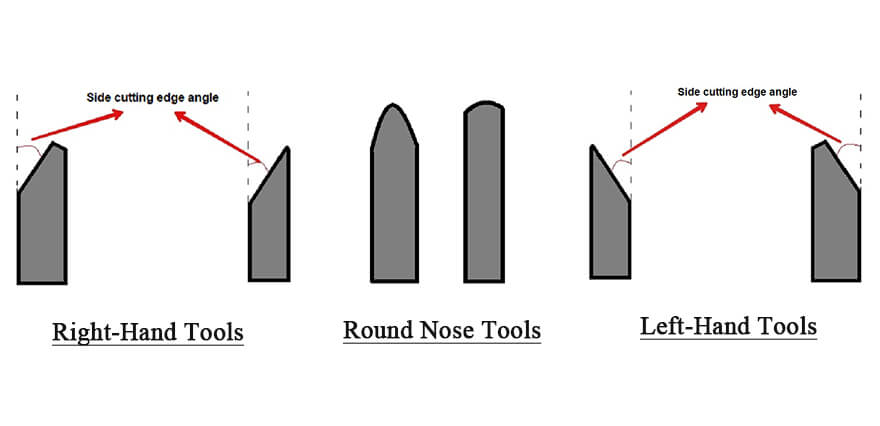
Lathe Cutting Tool Geometry
Lathe machine tools come in a variety of geometries, and each geometry differs in its performance, efficiency, and effectiveness in the certain cutting operation. Here are some of the most common parts:
- Point angle: The point angle is the angle formed between the two cutting edges at the tip of the tool. This angle is typically between 60 and 120 degrees and is chosen based on the material being cut and the desired surface finish.
- Flute geometry: The shape and size of the flutes in a cutting tool can affect chip evacuation, tool life, and cutting forces. Flute geometries can be straight, helical, or variable, depending on the needs of the specific application.
- Relief angle: The relief angle is the angle between the cutting face and a line perpendicular to the axis of the tool. This angle affects the strength of the cutting edge and can also impact chip evacuation.
- Rake angle: The rake angle is the angle between the top surface of the cutting tool and a line perpendicular to the axis of the tool. A positive rake angle can improve cutting performance, but it can also increase the cutting forces and generate more heat.
- Cutting edge angle: This is the angle between the cutting edge and a line perpendicular to the surface being cut. A smaller cutting edge angle creates a sharper cutting edge, but also increases cutting forces and the risk of tool breakage. A larger cutting edge angle decreases cutting forces but may produce a rougher finish.
- Clearance angle: The clearance angle is the angle between the flank of the tool and the surface of the workpiece. A larger clearance angle can increase chip flow and reduce cutting forces, but it can also weaken the cutting edge.
Choosing the Right Tool for the Job
When choosing a lathe cutting tool, it’s essential to have knowledge of specific aspects of the tool. Here are some critical factors that you should take into account.
Considerations for Material
1. Soft Metals
When cutting soft metals like aluminum, brass, and copper, the tool material must have high wear resistance to avoid dulling and built-up edges that result from the metal sticking to the cutting edges. Toughness is also important to prevent breakage due to the long chips produced by soft metals. The cutting tool should also have good heat resistance to handle the high temperatures created when cutting soft metals. Materials with these properties such as high-speed steel, heat-treated high-speed steel, tungsten carbide, and high-speed steel with added cobalt are preferred.
2. Hard Metals
Cutting hard metals like steel or titanium requires the use of tools that can withstand high pressures and temperatures during machining. In term of hardness, the cutting material should be harder than the workpiece. Ceramic or cubic boron nitride (CBN) are used for cutting hard metals. Toughness is also important, as hard metals create short, abrasive chips that can damage cutting edges. Cutting tools made with materials with high toughness such as carbide or high-speed steel can withstand the abrasive forces and last longer. Furthermore, cutting tools made of high-speed steel with high cobalt content or carbide with added tungsten carbide or cobalt offer better heat resistance.
3. Plastics
Anti-stick properties are necessary for cutting tools to avoid plastic sticking to the edge and causing degradation of the surface finish. Moreover, cutting tools with high thermal conductivity materials are preferred for efficient cutting of plastics because of their low thermal conductivity. Tools made with materials such as diamond-coated or coated with PCD may have anti-stick properties. High-speed steel and cast cobalt alloys are good choices for high thermal conductivity materials. Carbide cutters are excellent for sharpness retention properties, reducing the risk of tool breakage when plastic is machined.
Tool Geometry and Cutting Parameters
The direction in which a tool will cut is determined by the location of its cutting edge. The right tool geometry in lathe cutting, along with durability and performance considerations, plays an important role in the optimization of the cutting process for the specific workpiece being machined.
The Desired Part Shape
Different types of lathe tools can be used to achieve a specific shape. Thus, the appropriate lathe machine tools must be selected based on the desired outcome. Due to the complicated nature of many CNC machining projects, multiple cutting tools may be necessary.
Conclusion
Choosing the right lathe cutting tools is crucial for successful CNC turning operations. The appropriate selection of cutting tools will significantly impact the efficiency and quality of the final product. This article provides a basic guide to different lathe tools in four main categories, their geometries, and key considerations to help you determine the right one for your projects.
Work with Runsom to Optimize Your CNC Turning Projects
In case you are uncertain about which lathe machine tools can result in the shape you want, there is no need to fret. You can easily seek assistance from a team of professionals – Runsom Precision, the ultimate destination for all your machining requirements. Our range of CNC turning services comprises of different procedures such as facing, chamfering, knurling, etc. Whether you require a prototype or low-volume machined parts, we assure you of receiving top-quality results. Simply upload your CAD files today, and you will get a quote rapidly.
Other Articles You May be Interested in:

